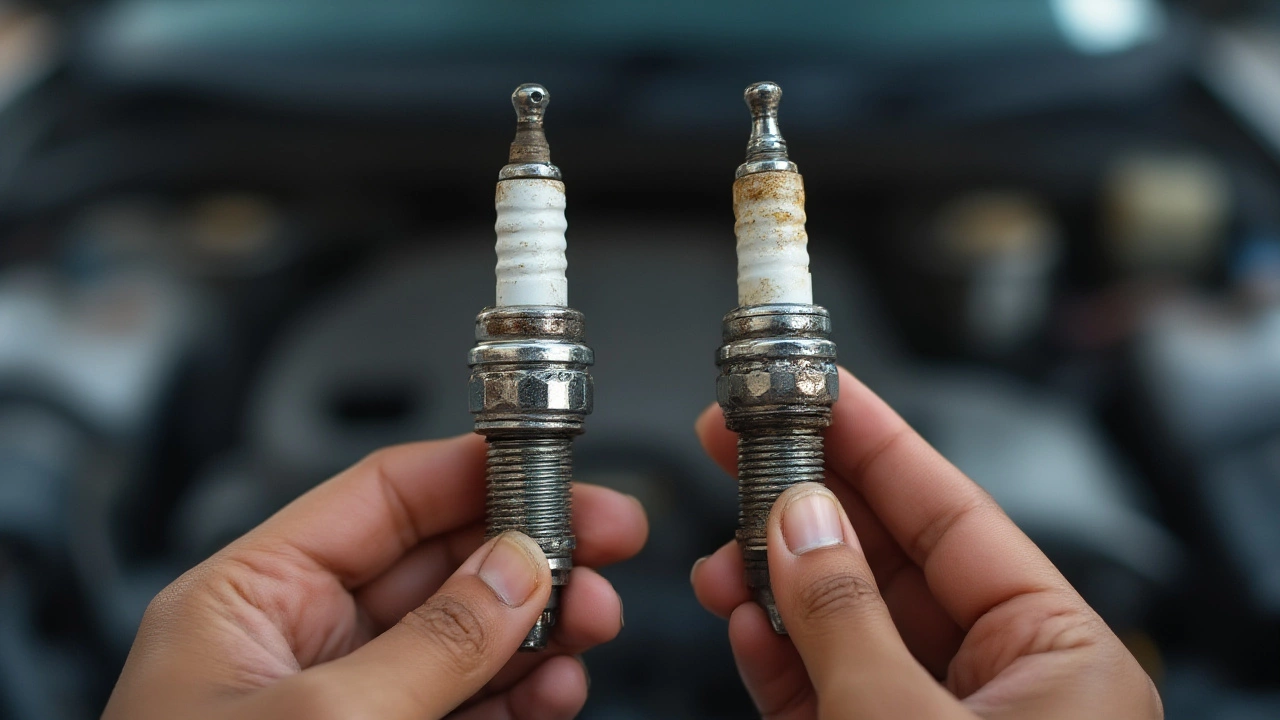Ever looked under your hood and wondered if swapping your own spark plugs could save you a pile of cash? The honest answer might surprise you—this little job has intimidated more car owners than you’d think, even though spark plugs are tiny, cheap, and tucked up front like they’re waiting for a quick swap. For folks who like rolling up their sleeves (or just want to dodge a labor charge at the shop), the mystery around spark plugs deserves to be busted wide open. Forget the rumors that only seasoned mechanics with years of hand grime can pull it off; with some prep, almost anyone can handle this classic bit of DIY car maintenance. But—it’s not always a cakewalk, and lurking surprises can trip you up if you don’t know what to expect.
What Spark Plugs Really Do—and Why Replacing Them Matters
Before talking tools and greasy boots, let’s settle why spark plugs are even worth your attention. These skinny little parts are basically the fire starters inside every gasoline engine. Every time you turn the key or hit “start,” the spark plugs create a little bolt of lightning that sets off the fuel-air mix in your engine. Without them, your car won’t even cough. Since each plug fires thousands of times per minute, the metal electrode inside eventually wears down, making it harder for your engine to start, run smoothly, or hit top gas mileage. That’s why most manufacturers recommend fresh plugs anywhere from every 30,000 to 100,000 miles, depending on the plug type and engine.
Neglecting worn plugs comes back to bite you. You could see a check engine light, rough idling, less power, or higher fuel bills. Sometimes, a misfiring plug can damage more expensive stuff like ignition coils or even the catalytic converter, which isn’t something you want to shell out a thousand bucks for. Here’s the kicker: a 2020 survey from AAA found that 1 in 3 American drivers delayed recommended car maintenance, and plugs were high on that list. Most people said time, cost, or just plain uncertainty on DIY know-how kept them from handling it. So the myth that you need a garage to do this is old news.
Quick fact check: spark plugs are not all created equal. Some are copper (cheaper, wear out quicker), while others use platinum or iridium for a stronger spark and longer life. The fancier plugs can last up to 120,000 miles, but they cost more and sometimes need a gentler touch to avoid snapping during install. Swapping these is usually about the same difficulty, but make sure you stick with what your owner's manual recommends.
| Type of Spark Plug | Typical Lifespan (Miles) | Average Cost (per plug) |
|---|---|---|
| Copper | 20,000 - 40,000 | $2 - $4 |
| Platinum | 60,000 - 100,000 | $6 - $12 |
| Iridium | 80,000 - 120,000 | $8 - $20 |
Remember, even though these replacements sound easy, you need to match plugs to your car and double-check the “gap” between electrodes. Most nowadays come pre-gapped, but it’s smart to check with a simple gap tool—it costs less than lunch but saves headaches later if you get a “no start” after changing them.

What Makes Changing Spark Plugs Easy—Or a Major Pain?
It sounds simple: unscrew the old plug, stick a new one in. Truth is, how easy it turns out depends on three things: the car’s engine layout, your tools, and your patience. For many domestic sedans from the last two decades, changing plugs is a straightforward job and takes less than 30 minutes. Trucks like the Chevy Silverado or Ford F-150? Most owners manage it in under an hour if they’re not hunting a dropped socket under the hood. But try a V6 from the early 2000s, or a modern Subaru boxer engine, and watch how fast your hands start to hurt. Some spark plugs sit under the intake manifold, behind hoses, or way back by the firewall—like some sort of automotive prank.
Here’s a big tip: before touching a thing, let the engine cool down. Not only are hot engines miserable for your knuckles, but cross-threading a plug into a warm aluminum head can strip the threads—a huge and avoidable mess. Cold engines are your friend. Next up, double-check you have the tools. Here’s what should be in your arsenal for nearly all jobs:
- Spark plug socket (has a little rubber insert to grip the plug)
- Socket wrench (long handle = more leverage)
- 3” and 6” extensions, depending on your engine’s design
- Gapping tool (a simple disc costs a few dollars)
- Torque wrench (not mandatory but helps prevent over-tightening)
- Anti-seize lubricant (for older engines, rarely needed on modern plugs)
- Dielectric grease (helps keep water and corrosion out of boots)
Now about tricky engines—ask any Honda Civic owner from the 1990s, and they’ll boast how quick it is: four plugs right on top, coil packs unplug with a Phillips screwdriver, and no fuss. Contrast that with a mid-2010s Ford Focus, where plug number four is buried so deep, you’ll need all your socket extensions working together. And if you drive anything European? Shout-out to VW and BMW owners who’ve learned that half the engine needs to come apart to get to plugs. The point is: check what you’re facing before starting. YouTube and forum guides for your model are life-savers here.
Some engines have delicate wire connections or are packed so tight, you’ll need small hands or knuckle-busting patience to remove coils or boots. The real challenge isn’t unscrewing the plug, but accessing it. If you find yourself digging through hoses and zip ties, snap a quick photo before disconnecting things—you’ll be glad you did when it’s time to reassemble. If the job looks overwhelming, there’s no shame in grabbing a beer and asking a friend, or even hitting up your local mechanic just this once.
Watch for surprise curveballs. That “check engine” light you were trying to beat? If it's on for any misfire code, do yourself a favor and replace the plugs and the ignition wires (or coil packs) all at once. Old wires can crack or stick when they're yanked. Another thing—spark plugs that haven’t been replaced in years sometimes seize in place. Spraying a little penetrating oil around the base and patiently working them back and forth can prevent snapped plugs. If you snap one, you’re looking at a headache that usually needs special removal tools.
| Vehicle Type | Typical Difficulty Level | Average Time Required |
|---|---|---|
| 4-cylinder sedan | Easy | 20-30 min |
| V6 or V8 engine | Moderate to Hard | 45-90 min |
| Turbocharged/European | Difficult | 1-2 hours |

Steps to Change Spark Plugs Like a Pro (And Mistakes to Avoid)
Ready to try it yourself? Here’s the step-by-step rundown—no fluff, just what actually matters for most cars.
- Park somewhere flat and let the engine cool off for at least 45 minutes.
- Pop the hood, and remove the engine cover if there is one.
- Find the spark plugs (sometimes under coil packs, sometimes visible with plug wires).
- Work one plug at a time—this stops you from mixing up wires or coil positions.
- Unplug the wire or coil, and use your socket/wrench combo and extension to carefully loosen the old plug (turn counterclockwise).
- If it doesn’t budge, spray with a little penetrating oil and wait a few minutes before trying again.
- Check the old plug—the color and condition will tell you if your engine’s running rich, lean, or burning oil (white ash, black sooty, and oily plugs point to different issues).
- Gap your new plug if it’s not already pre-gapped—read your manual for the right specification.
- Thread the new plug in by hand to avoid cross-threading—never start by wrench.
- Once snug, use your torque wrench to finish tightening to spec (usually 18-25 lb-ft for most cars).
- Dab a tiny amount of dielectric grease inside the boot at the top of the plug, then snap the coil or wire boot back on.
- Repeat for the next plug. Take breaks if you get stuck—frustration leads to mistakes.
Some mistakes people make? Over-tightening is a big one—it can crack plugs or damage threads. Starting threads with the wrench can cross-thread. Not checking plug type or gap leads to weak spark and “no start” panic moment after all your work. And not swapping one plug at a time can mix up wires or firing order, causing a rough-running engine. Want a hack to avoid dropping plugs deep into the engine? Jam a length of clean rubber tubing over the end of the plug, use the tube like a handle, and thread it in by hand—you’ll feel right away if it’s crooked instead of forcing it in blindly.
People often ask about the cost savings. Changing your own plugs usually costs under $50 if you buy the parts yourself (unless you’re driving a performance car with extra expensive plugs). A shop might charge $120-200 for labor alone, more if access is bad. Replacing your plugs not only saves cash, it gives you a firsthand look at your engine’s health—if you see melted electrodes or heavy deposits, you might spot deeper issues early.
Wondering about electric cars? They don’t have spark plugs at all. For hybrid owners, check your manual—some still use them. And if you’re driving a turbo car, changing plugs a bit early is wise, since higher heat and boost break them down sooner.
If you run into trouble and the car won’t start or runs rough, double-check your wire connections and firing order. Missed a coil? Trapped a wire under the intake? It happens. Go back step by step—don’t panic, and don’t crank the engine for minutes at a time or you’ll drain the battery. Forums and video tutorials from real owners of your vehicle are perfect for troubleshooting weird issues, and there’s no prize for getting it right on the first try.
So, are spark plugs easy to change? For many cars and most people, it’s totally doable with some patience and basic tools. The payoff is hard to argue with: smoother running, better mpg, and the satisfaction of learning something about your own ride. Worst case, if you hit a wall, you’re out maybe an hour and a greasy selfie—but you’ll know exactly what you’re paying for at the shop next time. That’s real car ownership, and it’s more within reach than most people realize.




